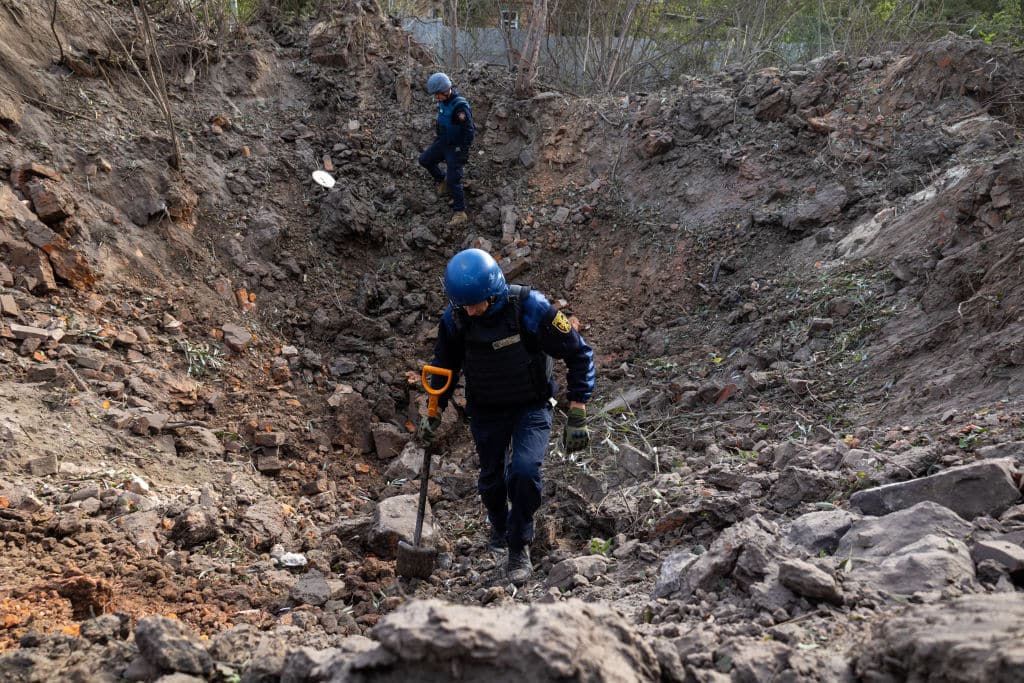The Ukrainian armed forces are attacking along three fronts in the south, east and north, reversing some of the territorial gains the Russian army made in the first six months of Russia’s wider war on Ukraine.
The war’s momentum clearly is shifting—in Kyiv’s favor.
Ukraine’s counteroffensive began on Aug. 30, in the south. The Ukrainian Southern Theater Command—overseeing around three dozen army, marine and territorial battalions with perhaps 20,000 combat troops—launched assaults across the 100-mile front line stretching along the Inhulets River north of Russian-occupied Kherson, a strategic port on the Black Sea.
The Ukrainians felt out at least three soft spots in the Russian 49th Combined Arms Army’s defenses. The Ukrainian navy’s 35th and 36th Naval Infantry Brigades found the softest spot. In the first week of the counteroffensive, they advanced seven miles south of Ukraine’s main lodgment on the left bank of the Inhulets, seemingly aiming for the 49th CAA’s bridgehead across the Dnipro River in Beryslav, 25 miles south of the Inhulets and 35 miles east of Kherson.
That bridgehead is critical to the Russian defense. In three months of shaping operations starting in late May, Ukrainian artillery, rockets, commandos and saboteurs damaged or dropped all the major spans over the Inhulets and Dnipro in and around Kherson, leaving a handful of pontoon bridges—including the one in Beryslav—as the main lines of communication to the 49th CAA.
Tens of thousands of Russian and allied troops are at risk of starvation and encirclement in Kherson Oblast. The Ukrainians are taking advantage of the occupiers’ worsening fragility, steadily marching south and liberating devastated villages.
In seizing the initiative in the south, Ukraine has forced Russia to react rather than act. The Kremlin since May has shifted around a dozen battalions—a tenth of its force in Ukraine—from the Donbas region in the east to Kherson Oblast.
Conditions are bad enough for the Russians in Kherson that the reinforcing battalions might not make much difference in the south. But pulling those troops from Donbas has made a difference there.
The Russian army this summer captured several small cities in Donbas, expending much of its manpower and firepower reserves in the process. The Russian offensive in Donbas ground to a halt outside Bakhmut last month, apparently signaling to Ukrainian commanders that the time was right for Ukraine to counterattack … everywhere.
Kyiv’s forces moved on Kherson first. And as the Russians hollowed out their defensive positions in the north and east in order to meet the Ukrainians in the south, the Ukrainians also moved on Donbas and Kharkiv.
Ukrainian president Volodymyr Zelensky on Tuesday confirmed Ukrainian gains in Donetsk Oblast in Donbas when he specifically thanked the 54th Mechanized Brigade and a local territorial brigade for their efforts. Ukrainian troops meanwhile probedRussian positions around Balakliia in Kharkiv Oblast. “Ukraine could give the enemy a few more surprises,” Zelesnky said.
It’s possible that, in the sixth month into the wider war, the Russian and Ukrainian armies are similar in size—each with around 100 battalions. The Russians on paperpossess more artillery, helicopters and warplanes, but the Ukrainians with their smaller air force and artillery corps have leveraged high-end American weaponry—High-Mobility Artillery Rocket Systems and High-Speed Anti-Radiation Missiles—to strike Russian supply lines and air-defenses.
The precision of Ukrainian deep strikes, combined with the Ukrainians’ shorter supply lines and superior morale, could give Kyiv key advantages as the war’s momentum shifts and the Russians struggle to keep up with ever-bolder Ukrainian maneuvers. https://060d82c014cb357ad7acde8d2553728b.safeframe.googlesyndication.com/safeframe/1-0-38/html/container.html
It’s telling that, just a couple months ago, the Ukrainian military struggled—and ultimately failed—to hold the high ground in the city of Lysychansk on the eastern edge of free Donbas. Today the Ukrainians aren’t just holding territory, they’re actively taking it back along three fronts.
The next few weeks are critical. The early winter months in Ukraine are wet and muddy. Traditionally, offensive warfare in Ukraine halts in October or November and resumes only after the ground freezes around the New Year.
Now is the time for Kyiv to free occupied settlements. Ukrainian commanders clearly understand that. It’s apparent they’ve been waiting, and preparing, for this moment.
By David Axe, Forbes Staff
